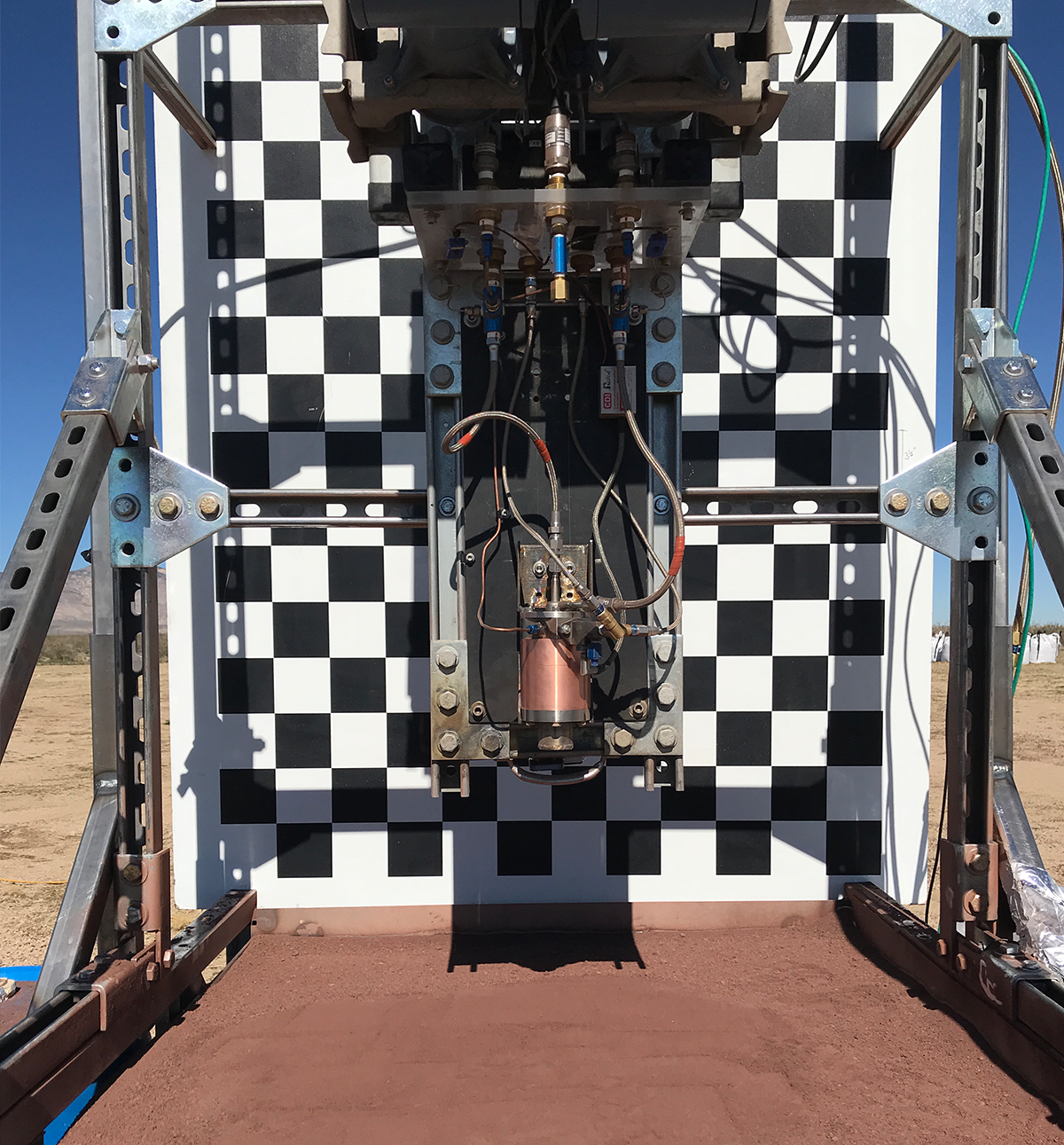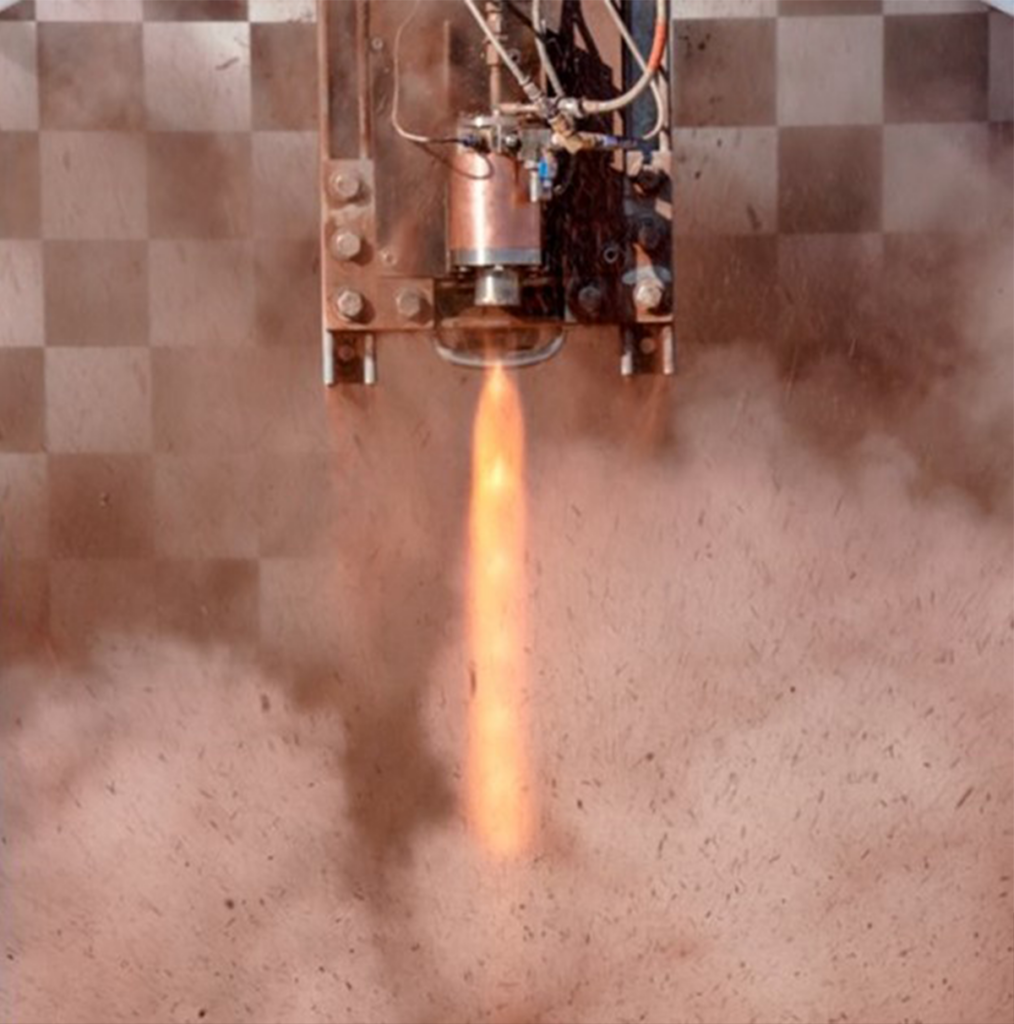
Pittsburgh, PA – September 6, 2023 – Astrobotic has begun work on two NASA Small Business Innovation Research contracts that will further research on lunar plume-surface interactions (PSI), a key area of risk and uncertainty for lunar landing. This testing will generate valuable new data about how lunar dust stirred up by a lander’s rocket plumes will affect landing systems, onboard payloads, landing sites, and nearby surface infrastructure on upcoming missions.
The first project, called ‘Floatinator’, will control and eliminate a major testing variable – namely, Earth gravity – that has limited ground-based lunar PSI tests to date. Astrobotic, in collaboration with Phil Metzger of the University of Central Florida, will design and build a hot-fire test apparatus capable of being dropped at a controlled acceleration to simulate lunar gravity.
“As different spacecraft land on the Moon and other celestial bodies, what happens to the surfaces they land on? To the spacecrafts themselves?” says Camille Arnn, Project Management Lead for Astrobotic’s Propulsion and Test department. “To lift off successfully and repeatedly from the same point, we need to understand the effects a rocket plume will have on the vehicle and the planetary surface it approaches. Floatinator is intended to do just that – it will help us approximate landing on another planetary body by replicating different gravities and landing descent patterns.”
“Essentially, our existing test stand called ‘Dropinator’ drops a rocket engine in a controlled way to simulate landing and to test plume-surface interactions, such as ejecta behavior and deep cratering. This new addition, ‘Floatinator’, will outfit the test stand with a box of regolith simulant that will drop, along with the rocket, at five-sixths the acceleration of Earth gravity. This calibrated downward acceleration creates an accurate reduced gravity simulation that can be tuned for the Moon, Mars, asteroids, and other celestial bodies,” said Travis Vazansky, Senior Project Manager for Astrobotic’s Propulsion and Test department. “This new equipment compliments our deep understanding of PSI from our 600-plus vertical takeoff vertical landing flights, hundreds of test stand firings, and analysis work across multiple lunar lander missions. We’re excited to offer PSI services to the larger space exploration community.”

Astrobotic’s second project complements the Floatinator project and builds on a legacy of low-SWaP sensor systems with on board processing. The team will develop a novel imaging sensor, called the Plume-Surface Interaction Combined Hot-fire Imaging Camera (PSICHIC), that combines the capabilities of a high-speed camera, a thermal camera, and an event camera, a novel imaging sensor which measures hyper-rapid changes in brightness, into a single, compact system designed to be used in stereo.
“PSICHIC will capture new data from hot-fire testing, including data not readily observed by the human eye or high-speed cameras,” according to Vazansky, “These contracts in tandem enable us to advance both PSI simulations through Floatinator, and the ability to record those tests with higher fidelity through PSICHIC. We are excited to continue our years of work with event cameras for space applications.”
The PSICHIC system can be readily paired with existing Astrobotic PSI test infrastructure to provide new optical and thermal data concerning ejecta physics and the behavior of regolith during lunar and planetary landings. Astrobotic also plans to mature PSICHIC as an onboard sensor that will fly on future Astrobotic landers to capture actual PSI data on the Moon.
PSI effects are a major area of interest and concern in the space industry: displaced lunar dust, called “ejecta”, can spray out at over 2,000 meters per second and cause serious problems for spacecraft and the surrounding environment. NASA’s Apollo 12 landing demonstrated the hazardous effects of ejecta when its lunar module sandblasted the Surveyor 3 probe located 200 meters from the landing site. Floatinator and PSICHIC will seek to better observe and characterize lunar PSI in preparation for Astrobotic’s upcoming lunar missions as well as the return of astronauts to the Moon with NASA’s Artemis missions.

